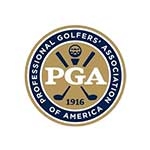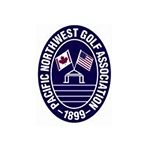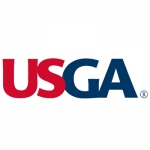Rule of the Month: Can We Fix It? Yes We Can! Sometimes.
By Sr. Rules Officials: Pete Scholz and Terry McEvilly
Click Here for the Rule of the Month Archive
Correcting Errors — After a Stroke Has Been Made
Most advantages that are gained by a breach of a Rule are sufficiently offset by penalty strokes or a loss of hole penalty in match play. However, in stroke play, certain breaches of the Rules can create such a significant advantage that they can’t be equalized with penalty strokes and the player must correct the error or risk being disqualified.
As you might imagine, it is of utmost importance to know when and how to correct those situations during play of a hole. And it is just as important to know when not to correct, as doing so might earn the player additional penalties. Also in the Rules is a requirement that any correction made by a player must be within a certain time frame.
Test your knowledge regarding if, when and how to correct Rules errors with the following questions and answers.
Questions: True or False (All situations are in individual stroke play)
- A player is asked by another player to move his ball-marker on the green because it is on the line of play of the other player. The player moves his ball-marker one club-head to the right. Forgetting to move the ball-marker back, the player replaces his ball where he moved the ball-marker to and putts from there. This error of playing from a wrong place must always be corrected.
- After her second shot from the fairway lands in deep rough behind the green, the player finds her ball after searching for 4 minutes. She plays it to the green and holes out with two putts. She has proceeded correctly.
- After his tee shot, the player finds a ball within one minute of beginning to search and plays it to the putting green. When he arrives at the ball he discovers that the ball is not his original ball. He is allowed two more minutes to search for his original ball and if not found he must return to where he last played the original ball from (Teeing Area) and proceed under penalty of stroke and distance. The wrong ball that was played must be abandoned and the stroke made at the wrong ball doesn’t count, but the player gets two penalty strokes for the breach.
- If the player in question #3 fails to find his original ball within the two minutes allowed after resuming the search, he must return to the tee where he will play his 5th stroke.
- A player makes her second stroke from the fairway, but the shot is offline and comes to rest in deep rough. Unsure if she will be able to find the ball, she properly plays a provisional ball that comes to rest on the putting green. She searches briefly for the original ball and finds it in an unplayable lie. She lifts the original ball and continues play with the provisional ball. She incurs only the stroke and distance penalty associated with the provisional ball.
- After holing out on the first hole, the player realized that he should have played from the white tee markers instead of the blue. He doesn’t need to correct this error because the blue tees are located further from the hole than the white tees.
- The player leaves a putt for a four only inches from the hole. Another player in the group concedes the next stroke for a five. The player lifts her ball and after leaving the putting green, another player in the group questions the concession. The player must replace the ball on its original spot, or estimated spot, and complete the hole by holing out with another stroke. She incurs one penalty stroke for lifting her ball from the putting green without marking the spot.
- Playing a ball from a no play zone is a serious breach which must always be corrected.
- In all situations, when a player becomes aware that a correction must be made during the play of a hole, he or she must report the facts of the situation to the Committee in charge of the competition before returning their score card.
-
When an error must be corrected, the player has until he or she begins the play of the next hole to correct. After that the player is disqualified.
Answers:
- False. Rules 13.1b, 14.1, 14.2 & 14.7. Only serious breaches of playing from a wrong place must be corrected. Generally, a minor error of playing from a wrong place, such as this case, should not be corrected. The player receives two penalty strokes for the breach and must complete the hole with the ball played from the wrong place.
- False. Definitions of Lost, Wrong Ball & Rule 6.3c. In this case, the player has played a wrong ball, which must always be corrected. While it was her original ball, because it wasn’t found within the allowed three minutes search period, it is no longer her ball in play and thus a wrong ball. To correct this error, she must return to the spot of her stroke in the fairway and put a ball into play under penalty of stroke and distance by dropping a ball within one club-length of where her stroke from the fairway was made, but not closer to the hole.
- True. Rule 6.3c. Similar to question #2, this player has also played a wrong ball which must be corrected. He is allowed a full three minutes to search for his original ball and the time spent playing the wrong ball doesn’t count against the total time. If the player finds his original within the two remaining minutes of searching, it is still in play and may be played without further penalty. The stroke with the wrong ball doesn’t count, but the player gets the general penalty of two strokes for playing a wrong ball.
- True. Rules 6.3c & 18.2a. If the player doesn’t find his original ball within the two minutes he was allowed for the resumed search, he must proceed under the stroke and distance penalty by putting another ball in play from the teeing area (the spot of his last stroke). His next stroke will be his fifth—original tee shot (1), two stroke penalty for playing a wrong ball (3), and the stroke and distance penalty for a lost ball (4). Any strokes at the wrong ball do count in the player’s score.
- False. Rule 18.3. Once the original ball was found in bounds, the provisional ball must be abandoned. Any further play with the provisional ball is play of a wrong ball. This player incurs two penalty strokes for playing a wrong ball and must correct the error by continuing play with the original ball. However, she lifted the original ball and incurred an additional one stroke penalty and must replace the ball. If she is unsure of the exact location, she must estimate it and replace the ball. She incurs a total of three penalty strokes and the strokes made with the provisional ball don’t count in her score.
- False. Rule 6.1b. This player has started the hole from outside the teeing area and must correct the error. He incurs two penalty strokes for the breach, but none of the strokes made at the ball played from outside the teeing area count in his score. He must return to the white tees and play from there. He will be making his third stroke.
- True. Rule 3.3c. There are no “gimmies” in stroke play. Every player must hole out on every hole. Failure to do so will result in disqualification. In this case, she must replace her ball on the putting green and hole out. She incurs one penalty stroke for lifting her ball without marking its position.
- False. Rules 2.4, 16.1f, 17.1e &14.7. Playing from a no play zone is handled the same as playing from a wrong place. If making the stroke from the no play zone would be considered a serious breach, then it must be corrected. The breach will get the player two penalty strokes whether or not the breach is serious. If the breach isn’t considered serious, then the player must continue play with the ball played from the no play zone, adding the penalty strokes to his or her score.
- False. Many Rules allow a player to simply make the correction without informing anyone. Such as playing from outside the teeing area when starting a hole and correcting the play of a wrong ball. However, other Rules require the play of a second ball for the correction, such as when a player corrects the serious breach of playing from a wrong place. In that case, the player must inform the Committee in charge of the competition the facts of the situation before returning his or her score card. In tournament play, it is always wise to inform the scoring official of any Rule situations that arose during play so the proper score can be recorded.
- True. Rules 6.1b, 6.3c & 14.7. When a mistake is made that must be corrected, the player has until he or she makes a stroke on the next hole to correct. And on the final hole of the round, before returning the score card. If a correction isn’t made within these time frame, the player is disqualified.








